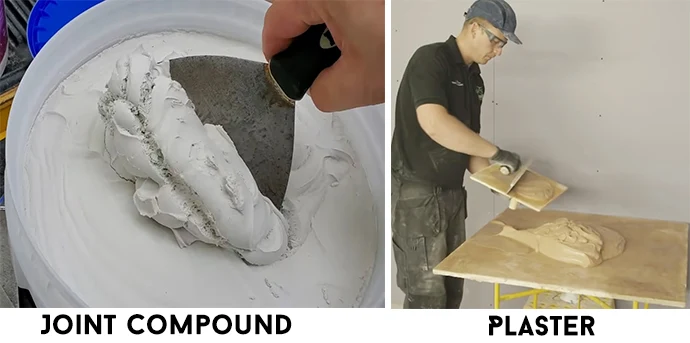Last Updated on August 2, 2023
The finishing touch on walls is where joint compound and plaster come in. While they both cover up cracks and patch gaps, each has its own unique strengths and weaknesses.
While Joint Compound is not as durable as plaster, it is less expensive and easier to apply. On the other hand, plaster provides a more durable finish that can last up to four times longer than Joint Compound.
To assist you in determining which product is best suited to your specific needs, we will compare and contrast the two materials. Whether it is for repair or decoration, this may be necessary.
Joint Compound Vs Plaster: Parameters of Comparison

1. Cost
A joint compound is generally less expensive than plaster. but the exact cost will depend on the specific type and size of the product and the location and availability of the product.
The cost of a joint compound can vary, counting on the type and brand, with some options starting at around $10 per gallon. Plaster, however, may cost anywhere from $20 to $50 or more per bag, depending on the variety and brand. In general, a joint compound is a more budget-friendly option for smoothing and finishing walls and ceilings.

2. Durability and Lifespan
Plaster is generally more durable and has a longer lifespan than joint compounds. Plaster hardens to a solid, rock-like consistency and is less prone to chipping or cracking than joint compounds. Once it is applied and cured, plaster can last for many years with minimal maintenance.
While the joint compound is suitable for many applications, it may not be as durable as plaster and may require more frequent repairs or maintenance over time.
Plaster is a more durable and long-lasting option for smoothing and finishing surfaces, while joint compound may be a more suitable choice for less demanding applications or those on a budget.
3. Color
A joint compound is typically white or off-white in color. This is because it is made from gypsum, which naturally has a light color, and because it is often mixed with water, which gives it a slightly translucent appearance.
Plaster can be white or a variety of colors depending on the type used. Some types of plaster, such as gypsum plaster, are naturally white and can be tinted with pigments to achieve different shades. Other types of plaster, such as lime plaster, are naturally off-white or light gray and may not be suitable for tinting.
A joint compound is an exemplary choice for applications where a light, neutral color is hoped, while plaster may be a better vote for those looking to achieve a specific color or finish.
4. Composition and Texture
Joint compound and plaster are materials utilized in construction and home repair to smooth and finish surfaces, such as walls and ceilings. While they have some similarities, they also have some key differences in their composition and texture.
The joint compound is made from water, gypsum, and other additives and has a smooth, creamy consistency. It is typically sold in a premixed form. The joint compound fills and smooths joints, seams, and imperfections on surfaces.
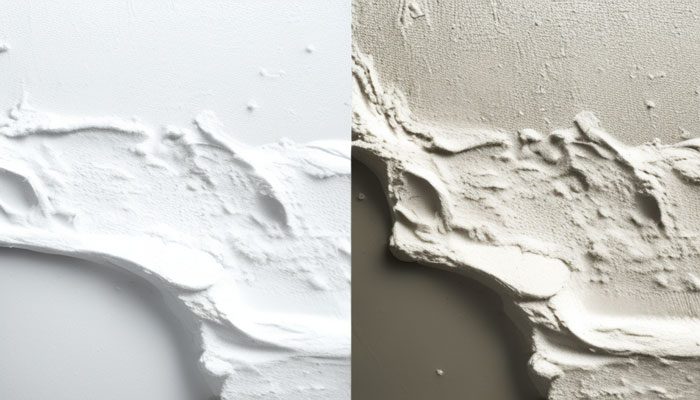
Plaster is made from gypsum, lime, or cement mixed with water and has a much thicker, gravelly texture. Plaster is typically sold in a dry powdered form. Plaster is used to build a smooth and even texture on surfaces.
Overall, the joint compound has a greasy, creamy texture and is easier to work with than plaster, which has a more granular and thicker consistency.
5. Odor
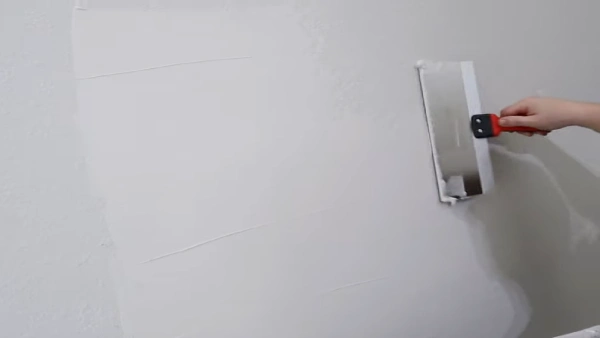
The smell of the joint compound is due to the chemicals used in its formulation, including gypsum and other additives. The smell is generally not overpowering and may not be noticeable unless you work with the compound in a confined space.
Plaster may have a stronger, more distinctive, more soil-like smell due to the compounds used in its production, such as gypsum, lime, or cement. The smell of plaster may be more noticeable depending on the sort and brand used and may linger after the plaster has been applied and dried.
Overall, the smell of joint compound is generally milder and less noticeable than the smell of plaster.
6. Drying Time
Joint compound typically dries faster than plaster, with some types setting in as little as 30 minutes. Plaster can take several hours or more to dry and harden.
The drying time of the joint compound can vary depending on the type and brand used, as well as the humidity and temperature of the environment in which it is applied. Some types of joint compounds are designed to set and dry quickly, while others may take longer to dry and cure.
Plaster takes longer to dry and harden due to its thicker, more granular consistency and the materials used in its formulation. Plaster may also require additional drying time after it has been applied and smoothed to allow it to cure and harden fully.
Overall, a joint compound is a good preference for applications where a fast drying time is desired, while plaster might become a more reasonable option for those who have the time and patience to wait for it to dry and cure.
7. Physical Characteristics
Joint compounds and plaster have some physical characteristics that are similar and some that are different. However, there are some key differences in the physical characteristics of joint compound and plaster:
- A joint compound is generally softer and more flexible than plaster, which is harder and more rigid.
- The joint compound has a smooth, creamy consistency, while plaster has a thicker, more granular consistency.
- A joint compound is less prone to cracking under stress than plaster, which is more rigid and may be more prone to cracking or chipping.
- A joint compound is generally easier to sand and finish than plaster.
Overall, the physical characteristics of joint compounds and plaster can impact their suitability for different applications and the level of skill and experience required to work with them.
8. Finishing Options
Both plaster and joint compound can be sanded, painted, or wallpapered over once they are dry. However, plaster is generally considered to produce a smoother finish than a joint compound.
A joint compound is typically chosen to use as a base for wallpapering, painting, or other decorative finishes. A joint compound may require sanding or additional finishing to achieve an even surface, a smoother finish before it can be painted or wallpapered.
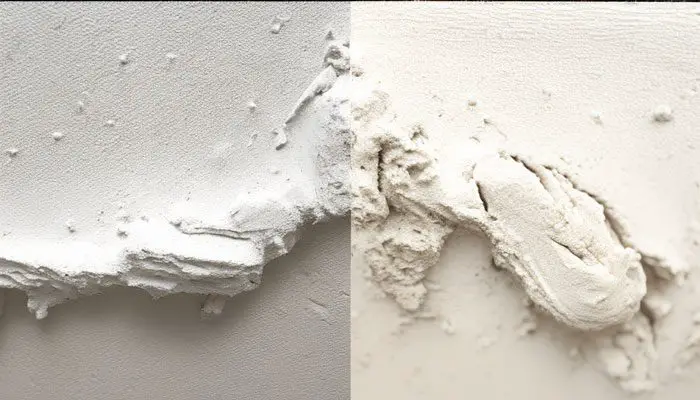
Plaster is applied in thin layers as a final finish in many cases. Plaster may require minimal or no sanding or finishing to achieve a smooth surface, depending on the quality of the application and the desired finish.
Prevailing, both joint compound and plaster can be finished in a variety of ways, but plaster may be a better choice for those looking for a smoother, more polished finish.
9. Adhesion
Plaster has better adhesion to most surfaces than joint compounds, making it the right choice for use on uneven or porous surfaces, and it may not require additional adhesion agents or primers.
The joint compound may not adhere as well to some surfaces as plaster, particularly uneven or porous surfaces, and may require extra primers or adhesion agents to improve its grip.
Overall, plaster is a good choice for applications where strong adhesion is desired, while joint compound might become a suitable option for less demanding applications or for those working with smooth, even surfaces.
10. Flexibility
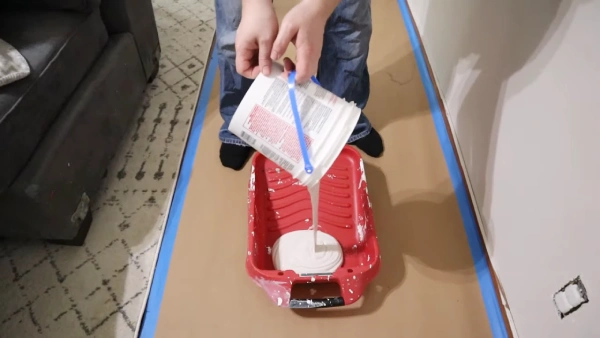
A joint compound is a soft, pliable material. The joint compound is flexible and less prone to cracking or chipping under stress, making it a good alternative for use on surfaces that may be subjected to movement, expansion, or contraction.
Plaster is a harder, more rigid material. Plaster is less flexible than joint compounds and may be more tending to crack under stress, particularly if it is applied too thickly or if the surface it is applied to is subjected to movement or expansion, and contraction.
Overall, joint compound is a good pick for applications where flexibility is desired, while plaster may be a more promising option for surfaces that are less likely to be subjected to movement or stress.
11. Shrinkage
A joint compound may shrink as it dries, mainly if it is applied in thick layers or if the temperature and humidity of the environment are not optimal. Shrinkage can cause the joint compound to crack or pull away from the application surface, requiring additional repairs or touch-ups.
Plaster may also shrink as it dries, but it typically shrinks less than the joint compound, which can result in a smoother, more even finish. This is because plaster is a more rigid material and is less prone to movement as it dries and cures.
Overall, both joint compound and plaster may shrink as they dry, but plaster typically shrinks less, making it a fine selection where shrinkage is a concern.
12. Application Process
To apply joint compound, you will need a trowel or putty knife, a drywall knife, and a drywall or plastering screen (optional).
- First, ensure the surface you are working on is clean and dry.
- Mix the plaster according to the manufacturer’s instructions, using the appropriate amount of water and stirring until it is smooth and evenly mixed.
- Then, apply a thin layer of joint compound or a light plaster coating to the surface.
- Use a straight edge to ensure the plaster is applied evenly and to the correct thickness.
- Once the joint compound or the plaster has parched, you can sand it down using a sanding block or fine-grit sandpaper to remove imperfections like bumps.

Additional Tips
- If you are working on joints, seams, or imperfections, you may need to apply multiple layers of joint compound to create a smooth, even finish.
- To apply plaster, you will also need a putty knife or trowel, a hawk (optional), and a straight edge (optional).
- If you are using a plastering screen, you can apply joint compound in thin, even layers, which may help reduce the amount of sanding required.
- Use a hawk to hold the plaster as you work. Plaster sets quickly, so it is important to work quickly and smoothly to achieve a smooth, even finish.
Overall, the application process for joint compound and plaster is similar, but plaster requires more skill and experience to apply and finish due to its denser, grainy consistency and faster setting time.
13. Uses
A joint compound is commonly used as a base for painting, wallpapering, or other decorative finishes. A joint compound is often used in residential and commercial construction projects to finish drywall or repair wall holes or imperfections.
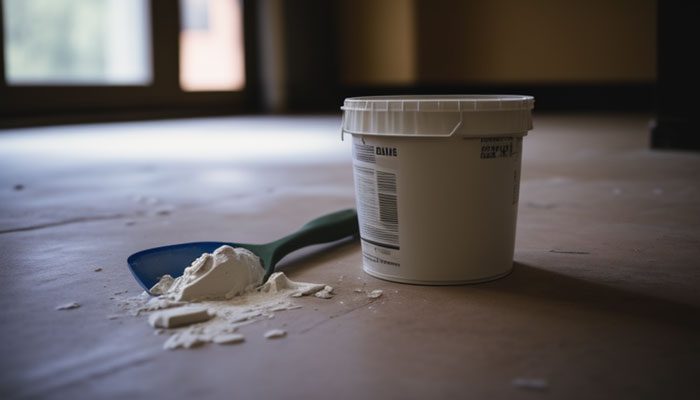
Plaster is typically used as the last finish in considerable circumstances. Plaster is often used to smooth out and finish concrete or brick walls or to create decorative finishes or murals.
Across the board, both joint compound and plaster are commonly used in construction and home restoration projects but are used in different ways and for different purposes depending on the specific needs and requirements of the project.
14. Availability
A joint compound is typically sold in premixed form and is ready to use straight out of the container. Joint compound is also available in further types, such as lightweight or all-purpose.
Plaster is typically sold in dry form and must be mixed with water before use. Plaster is also available in different varieties, such as lime, gypsum, or cement-based.
It is possible to get any of these two in various sizes, from small tubs, bags, or containers for small projects – to large bags or buckets for larger projects.
All-round, joint compound and plaster are widely available and can be easily sourced from most home improvement stores, building supply stores, and online retailers.
Can I Use a Joint Compound to Fill Cracks?

Yes, you can use joint compound or “drywall mud” to fill cracks in walls. A joint compound is a quick and easy way to repair minor imperfections on walls and ceilings.
It is also often used where two pieces of drywall meet for a seamless finish. When using a joint compound for cracks, it’s important first to clean the area of dirt and grease, then apply the compound over the crack with a putty knife.
The joint compound should be smoothed out evenly over the area so that it is level with the wall. Once dry, sand lightly to ensure an even finish.
Is a Skim Coat the Same as a Joint Compound?
Skim coat and joint compound are similar in that they are both mainly composed of gypsum dust, making them thick and putty-like when mixed with water.
However, skim coats typically have little or no fiber added, whereas joint compounds often contain cellulose fibers which help strengthen their composition.
Generally speaking, the skim coating is used when you have a very uneven wall or ceiling surface, while the joint compound is great for smaller repairs like filling minor cracks or covering screw heads.
Moreover, the skim coating requires more skill because it needs to be applied evenly across a large area, while joint compounds are easier to spread since they can be manipulated with trowels or other tools if needed.
What are the Three Types of Plaster?
The three types of plaster commonly used in construction are gypsum plaster, lime plaster, and cement plaster.
Gypsum plaster is made from calcium sulfate dihydrate (also known as plaster of Paris), which sets quickly when mixed with water and can be applied directly onto walls without needing any additional backing materials such as wood lath or metal mesh.
Lime plaster is made from calcium hydroxide, which gives it good adhesive properties and allows it to bond well with stone or brickwork surfaces. It dries slowly, giving plenty of time for smoothing before hardening fully.
However, lime plasters aren’t suitable for areas subject to dampness due to their poor weather resistance capabilities.
Finally, cement plaster is composed mainly of cement but also contains sand and other additives. These compounds give it excellent strength characteristics, making them ideal for outdoor use in exposed locations such as chimneys and exterior walls.
However, they do require additional backing materials before application, like gypsum or lime plasters, since they don’t adhere well directly onto masonry surfaces on their own.
Final Thoughts
The above comparison between joint compounds and plasters reveals that each one has distinct characteristics. Joint compounds and plaster are great materials for home improvement projects.
Despite the similarities in composition, texture, and uses like patching walls or creating artistic designs on ceilings, each material has its own unique set of pros and cons.
The right choice depends on what you’re trying to achieve with the project in terms of cost-efficiency, longevity, or aesthetic appeal.
With this article in hand, we hope it helps make that choice easier by giving a better understanding of joint compound versus plaster. This will help determine what product would yield ideal results according to cost-effectiveness and longevity.
